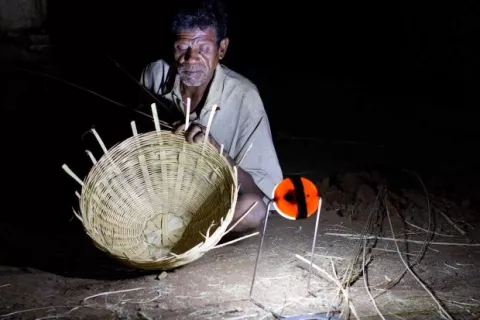
There was a time when stringing together ‘alleviating rural distress’ and ‘solar energy’ in a sentence might have felt like a farfetched dream in India. However, today, micro-grids, mainly powered by solar energy, are in many ways proving to be the most efficient solution to the rural electrification crisis in India, and in turn the economic progress of India.
Escalating energy demand
The growth in India’s energy demand will be around double the aggregate of non-OECD countries; with urbanisation rate of 32%, the energy demand in rural India is expected to rise exponentially. Economic growth is certainly driving the energy demand, which is going to accelerate steeply in the next decade. Rural electrification — expansion of electrification and electricity services — is vital to both the economic and social development of India.
According to the latest BP Energy Outlook 2035, India's energy production will rise by 117 per cent to 817 million tonnes of oil equivalent while consumption will grow by 128% over the next two decades. Energy deficit of 2014-2015 was 5.10% with per capita energy consumption of 1000 kWh, which is far lower compared to world average of 3130 kWh.
Efforts to bridge the energy gap
The rural electrification programme is a priority mission for the government, and it plans to invest Rs 756 billion for rural electrification under the Deen Dayal Upadhyaya Gram Jyoti Yojana (DDUGJY) launched in 2015. The Ministry of Power has sanctioned 921 projects to light up the un-electrified villages and intensive electrification of 270,000 villages by May 1, 2018. DDUGJY is transforming the rural landscape rapidly. During 2015-16, 7,012 villages have been electrified as of March 2016, with highlight of electrification of 314 villages across nine states in a week (from 29th Feb to 6th March 2016). However, a staggering number of 11,000 villages have never seen the light of a bulb and tens of thousands more lack quality of power. There may even be a case of exaggerated claims on the numbers of villages electrified.
Challenges that are outpacing the efforts
For accelerating rural electrification, numerous programmes had been implemented in the last few decades. However, the focus of these programs has been on the physical electricity infrastructure investments or ambitious coverage targets (REP 2003 aimed to achieve 100% electrification by 2012), but not on financing or reliable services or creating incentives for sustainable maintenance of infrastructure or management of supply-distribution chain. This results in a non-sustainable system, where payout, if any, from the reduced subsidies would have to be invested back into maintaining or modernising or adding new infrastructure.
Collaboration is the way forward
Public-private partnership model is the key to achieving this change in a sustainable manner. One such example is Rockefeller Foundation’s involvement and support to light up 1,000 villages in Uttar Pradesh and Bihar over the next three years through solar-powered mini-grids with Rs 467 crore investments. New Delhi-based Smart Power has partnered energy service companies (ESCOs) such as Urja Mitra, telecom tower operators, investors, non-governmental organisations (NGOs), and government agencies in implementing this project.
BP’s report further states that with 132% growth rate India is likely to outpace all BRIC countries including China by 2035, resulting in imports of fossil fuels like coal by 163%. Henceforward, to satisfy this daunting demand in a sustainable manner, especially for remote and sparsely populated rural areas, micro-grids powered by renewable energy are the way ahead.



